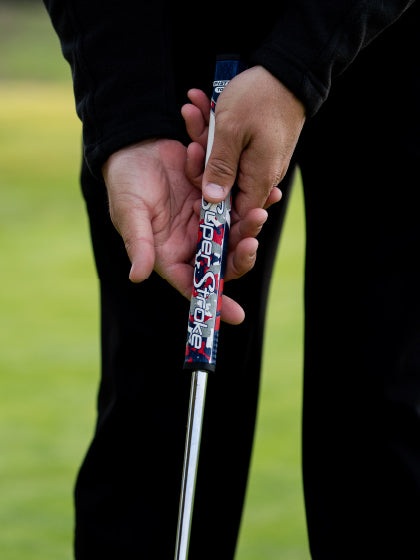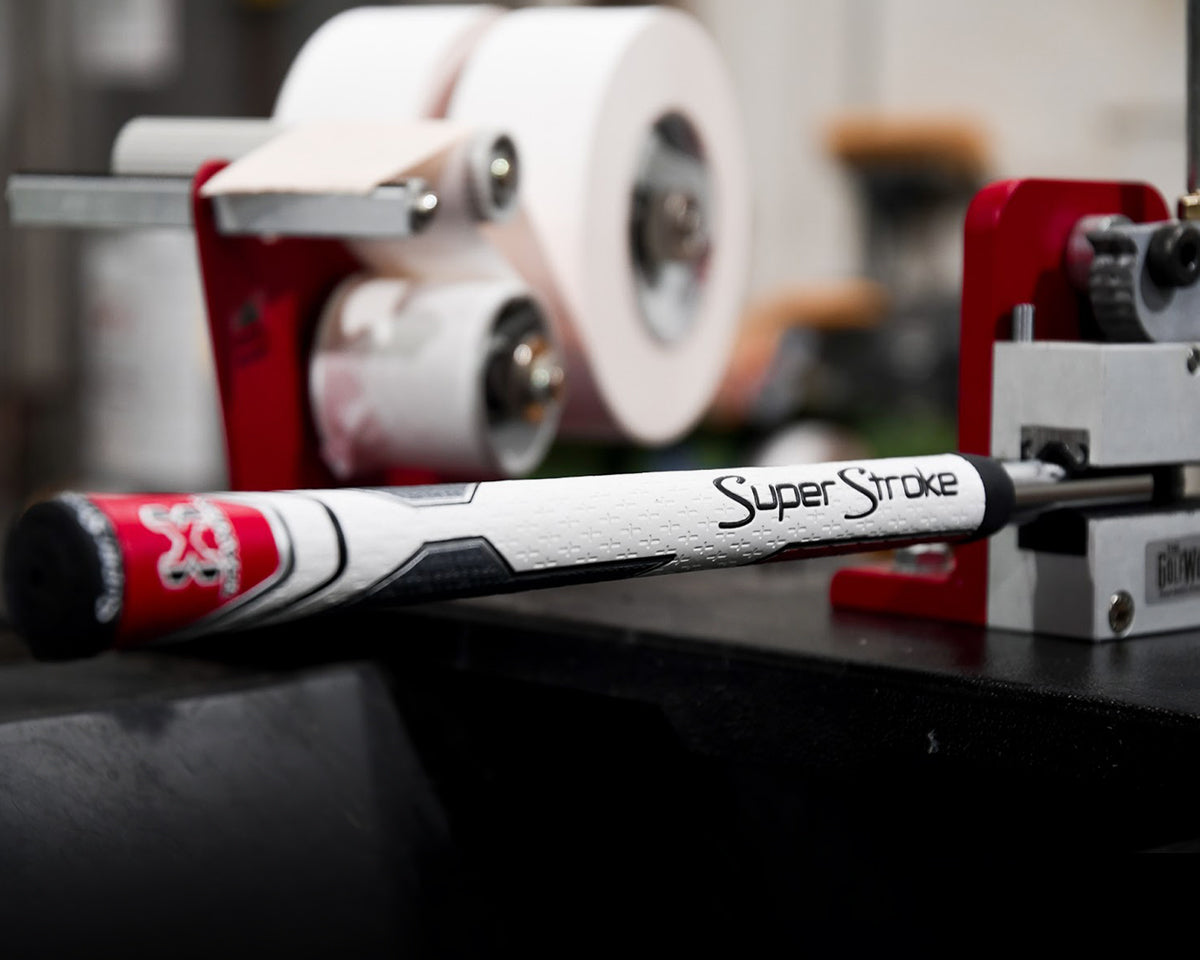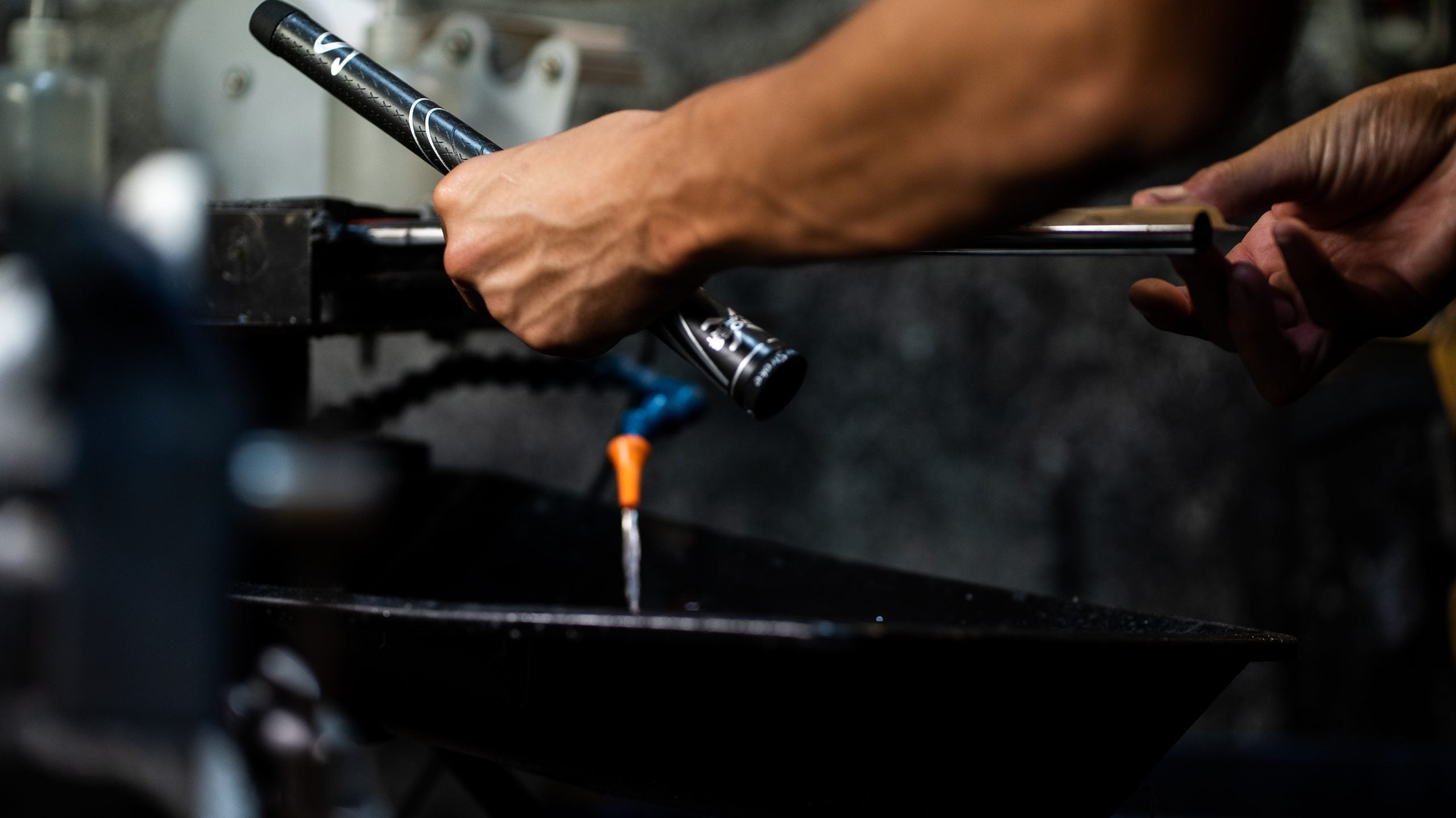Fresh grips matter
The first rule of re-gripping your golf clubs like a pro is to re-grip frequently. Even if you play only a handful of times a year or just go to the range to bang balls, UV rays, moisture, sweat, soil, sand, fertilizers and friction are busy breaking down the grip and reducing playability. Your clubs will thank you.
How much do fresh grips matter? Some TOUR Pros get new grips before every tournament.
Maintaining that like-new feel is not necessarily an inexpensive proposition. Your nearby golf shop may charge $30-$50 to install a full set of golf grips, on top of the cost for the grips themselves. All the more reason to do it yourself with a SuperStroke Re-Grip Kit. That, or if you’re a little more old school, with a modest initial investment and the right tools, it’s just a matter of restocking tape and solvent.
The tools
You need a place to work; ideally a basement, garage or workshop away from the normal activities of the house. The solvent used to install grips creates fumes, so good ventilation is important.
- You need a vise and rubber shaft clamp to prevent damage to your golf club’s shaft.
- Removing old grips and tape requires a sharp box cutter knife; a standard blade is fine but the hook-shaped blades tend to work faster.
- Grip tape, solvent, shallow tray and a few shop rags round out the tools list.
How to regrip your golf club in 6 easy steps
- First, secure the golf club in the rubber shaft clamp and place in the vise so the grip is about 4-5” from the rubber clamp. This will keep the grip area stable while you work. Orient the club so the face is perpendicular to the floor.
- Carefully cut away the old grip. Use the knife blade to scrape away old tape; use mineral spirits and a rag to remove any remaining glue.
- To measure the proper amount of tape, hold the new golf grip next to the club shaft; tape should not extend beyond the length of the new grip. If using 2” grip tape, take care to eliminate bubbles and wrinkles while applying and before removing the paper backing. For 3/4” tape, wrap in a spiral motion from the tip of the shaft toward the club face taking care not to extend beyond the length of the new grip. Remove the backing. In both cases, use a small piece of tape to cover the open end of the shaft to prevent solvent from entering.
- Pour a small amount of solvent into the new grip, covering the vent hole in the butt to prevent spillage, and give the grip a shake to coat the interior.
- Pouring through the vent hole, coat the entire length of the taped shaft, catching over spill in the shallow tray (to use on the next golf club). Make sure no part of the tape is left dry. Working quickly, ease the new grip onto the shaft butt, (alignment pattern up) and push steadily until the new grip butt seats firmly against the shaft butt.
- Make final adjustments to alignment; you have about a minute before the adhesive sets to get the grip properly aligned.
Give your new golf grips at least an hour to fully set before playing.
The tricks
Now that you know how to re-grip your own golf clubs at home, here are a couple of bonus hacks from re-gripping pros:
- If you find yourself without branded golf grip solvent, there are other (and cheaper) alternatives you probably have laying around the house. Paint thinner, mineral spirits, and rubber cement all work.
- Exhaust your double-stick tape half-way through re-gripping? Double-sided carpet tape works just as well.
- For many PGA TOUR pros, club grips are as unique as fingerprints, which is why they do their own re-gripping. Now that you can re-grip your own clubs, experiment with varying thickness by adding layers of tape wherever you’d like to feel more (or less) contact with the club. You’ll be amazed at how these customizations can affect your swing.
Congratulations on mastering your new skill. Your clubs and your game will thank you. Now what are you waiting for? Go order those new club grips!




